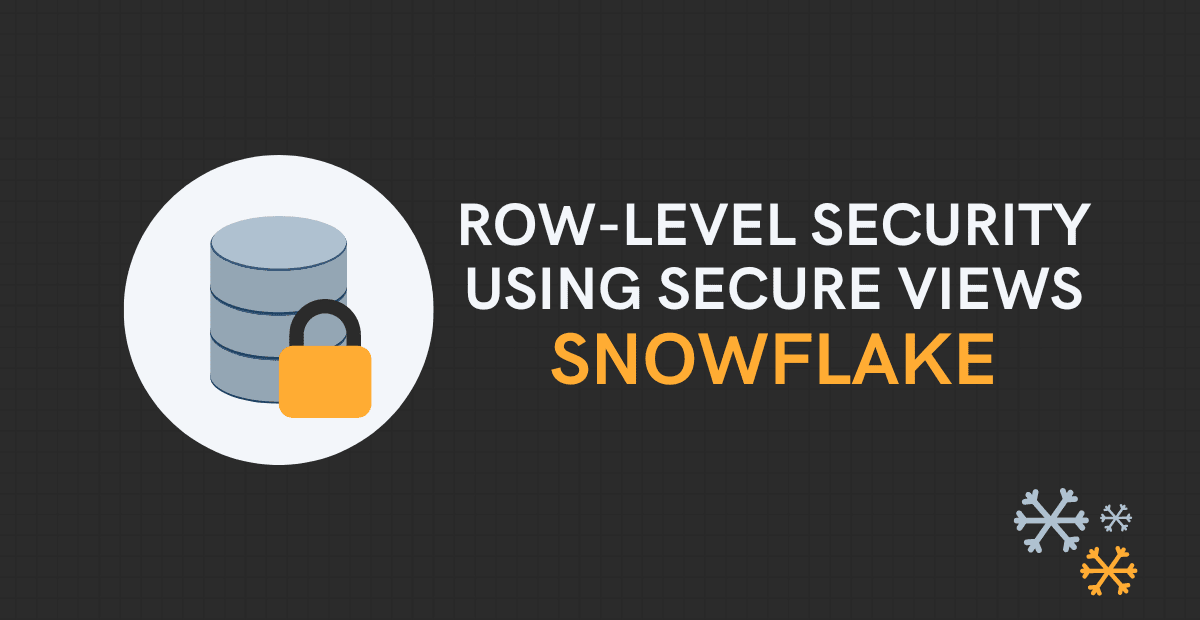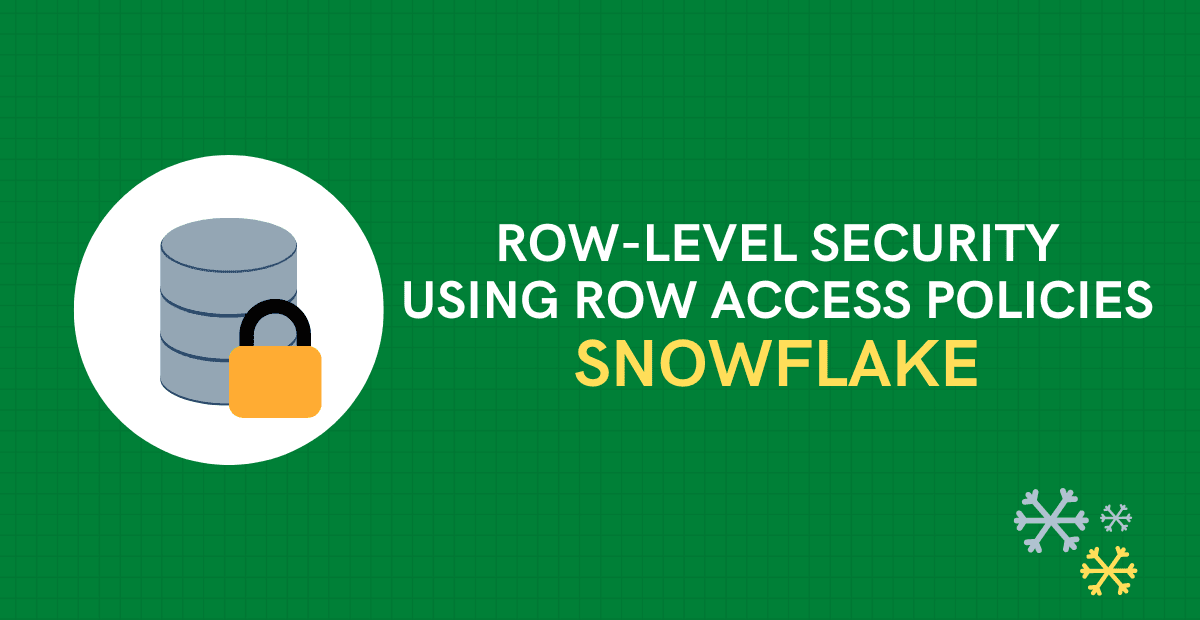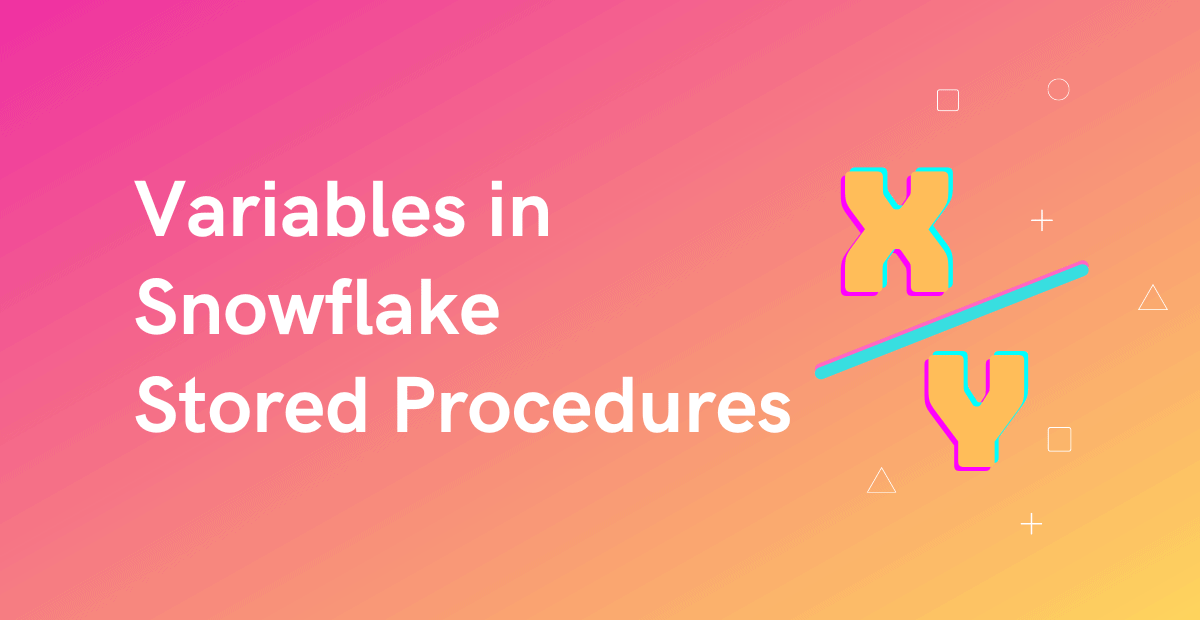1. What are Variables in Snowflake Stored Procedure?
A Variable is a named object which holds a value of a specific data type whose value can change during the stored procedure execution. Variables in Snowflake stored procedures are local to stored procedures are used to hold intermediate results.
In this article let us discuss in-detail about declaring and using variables in Snowflake Stored Procedures. To learn more about creating a Stored Procedure, refer our article – Introduction to Snowflake Stored Procedures
2. Declaring Variables in Snowflake Stored Procedures
A Variable must be declared before using it in Stored Procedures. When a variable is declared, the type of the variable must be specified by either:
- Explicitly specifying the data type. The data type of variable can be
- SQL data type
- CURSOR
- RESULTSET
- EXCEPTION
- Specifying an initial value for the variable using DEFAULT command. Snowflake Scripting uses the DEFAULT value to determine the type of the variable.
A Variable in Snowflake can be declared either in DECLARE section or BEGIN…END section of the stored procedure body or both.
The below example shows variable declaration in DECLARE section of the stored procedure body.
-- Variable declaration in DECLARE section of body
<variable_name> <type>;
<variable_name> DEFAULT <expression> ;
<variable_name> <type> DEFAULT <expression> ;
-- Examples
net_sales NUMBER(38,2);
net_sales DEFAULT 98.67;
net_sales NUMBER(38,2) DEFAULT 98.67;
The below example shows variable declaration in BEGIN…END section of the stored procedure body.
-- Variable declaration in BEGIN...END section of body
LET <variable_name> { DEFAULT | := } <expression> ;
LET <variable_name> <type> { DEFAULT | := } <expression> ;
-- Examples
LET net_sales := 98.67;
LET net_sales DEFAULT 98.67;
LET net_sales NUMBER(38,2) := 98.67;
LET net_sales NUMBER(38,2) DEFAULT 98.67;
Note that the variable should be preceded with LET command while declaring variables in BEGIN…END section of the body.
3. Assigning values to Declared Variables in Snowflake Stored Procedures
To assign a value to a variable that has already been declared, use the := operator:
<variable_name> := <expression> ;You can use another declared variables in the expression to assign the resulting value to the variable.
The below example shows
- A variable named
gross_salesdeclared under DECLARE section of the body with initial default value as0.0using DEFAULT command - Two variables declared in the BEGIN…END section of the body using LET command.
- The variable
net_salesis assigned a value as98.67using := operator.
- The variable
taxis declared with an initial value of1.33using DEFAULT command.
- The variable
- The variable
gross_salesis assigned a resulting value of the summation expression of variablesnet_salesandtax. - Finally the variable
gross_salesis returned as an output using RETURN command.
DECLARE
gross_sales NUMBER(38, 2) DEFAULT 0.0;
BEGIN
LET net_sales NUMBER(38, 2) := 98.67;
LET tax NUMBER(38, 2) DEFAULT 1.33;
gross_sales := net_sales + tax;
RETURN gross_sales;
END;4. Using a Variable in a SQL Statement (Binding)
The variables declared in the stored procedure can be used in the SQL statements using colon as prefix to the variable name. For example:
DELETE FROM EMPLOYEES WHERE ID = :in_employeeid;If you are using the variable as the name of an object, use the IDENTIFIER keyword to indicate that the variable represents an object identifier. For example:
DELETE FROM IDENTIFIER(:in_tablename) WHERE ID = : in_employeeid;If you are building a SQL statement as a string to execute, the variable does not need the colon prefix. For example:
LET sql_stmt := 'DELETE FROM EMPLOYEES WHERE ID = ' || in_employeeid;Note that if you are using the variable with RETURN, you do not need the colon prefix. For example:
RETURN my_variable;5. Assigning result of a SQL statement to Variables using INTO clause in Snowflake Stored Procedures
You can assign expression result of a SELECT statement to Variables in Snowflake Stored Procedures using INTO clause.
The syntax to assign result of a SQL statement to variables is as below.
SELECT <expression1>, <expression2>, ... INTO :<variable1>, :<variable2>, ... FROM ... WHERE ...;In the syntax:
- The value of
<expression1>is assigned to<variable1>. - The value of
<expression2>is assigned to<variable2>.
Note that the SELECT statement used to assign values to variables must return only single output row.
Consider below data as an example to understand how it works.
CREATE OR REPLACE TABLE employees (id INTEGER, firstname VARCHAR);
INSERT INTO employees (id, firstname) VALUES
(101, 'TONY'),
(102, 'STEVE');The below stored procedure assigns the id and firstname of the employee with id 101 into variables id_variable and name_variable respectively.
CREATE OR REPLACE PROCEDURE get_employeedata()
RETURNS VARCHAR
LANGUAGE SQL
AS
$$
DECLARE
id_variable INTEGER;
name_variable VARCHAR;
BEGIN
SELECT id, firstname INTO :id_variable, :name_variable FROM employees WHERE id = 101;
RETURN id_variable || ' ' || name_variable;
END;
$$
;When the stored procedure is executed, the output returns the concatenated values of id and name of the employee with id 101.
CALL get_employeedata();| GET_EMPLOYEEDATA |
| 101 TONY |
6. Variable Scope in Snowflake Stored Procedures
If you have nested blocks in your stored procedures and multiple variables with same name are declared in it, the scope of the variable will be local to the block its declared.
For example, if you have an outer block and inner block where you have declared a variable my_variable and assigned value as 5 in outer block and 7 in inner block. As long as the variable is used in the inner block, the value remains 7 and all operations outside the inner block, the value assigned to variable remains 5.
When a variable name is referenced, Snowflake looks for the variable by starting first in the current block, and then working outward one block at a time until a matching name is found.
Checkout other articles related to Snowflake Stored Procedures
Subscribe to our Newsletter !!
Related Articles:

Row-Level Security is a security mechanism that limits the records returned from a database table based on the permissions provided to the currently logged-in user.

A Row Access Policy is a schema-level object that is assigned to a table or view and determines whether a given row in them can be viewed by a user.

Stored procedures allow you to write procedural code that executes business logic by combining multiple SQL statements.




